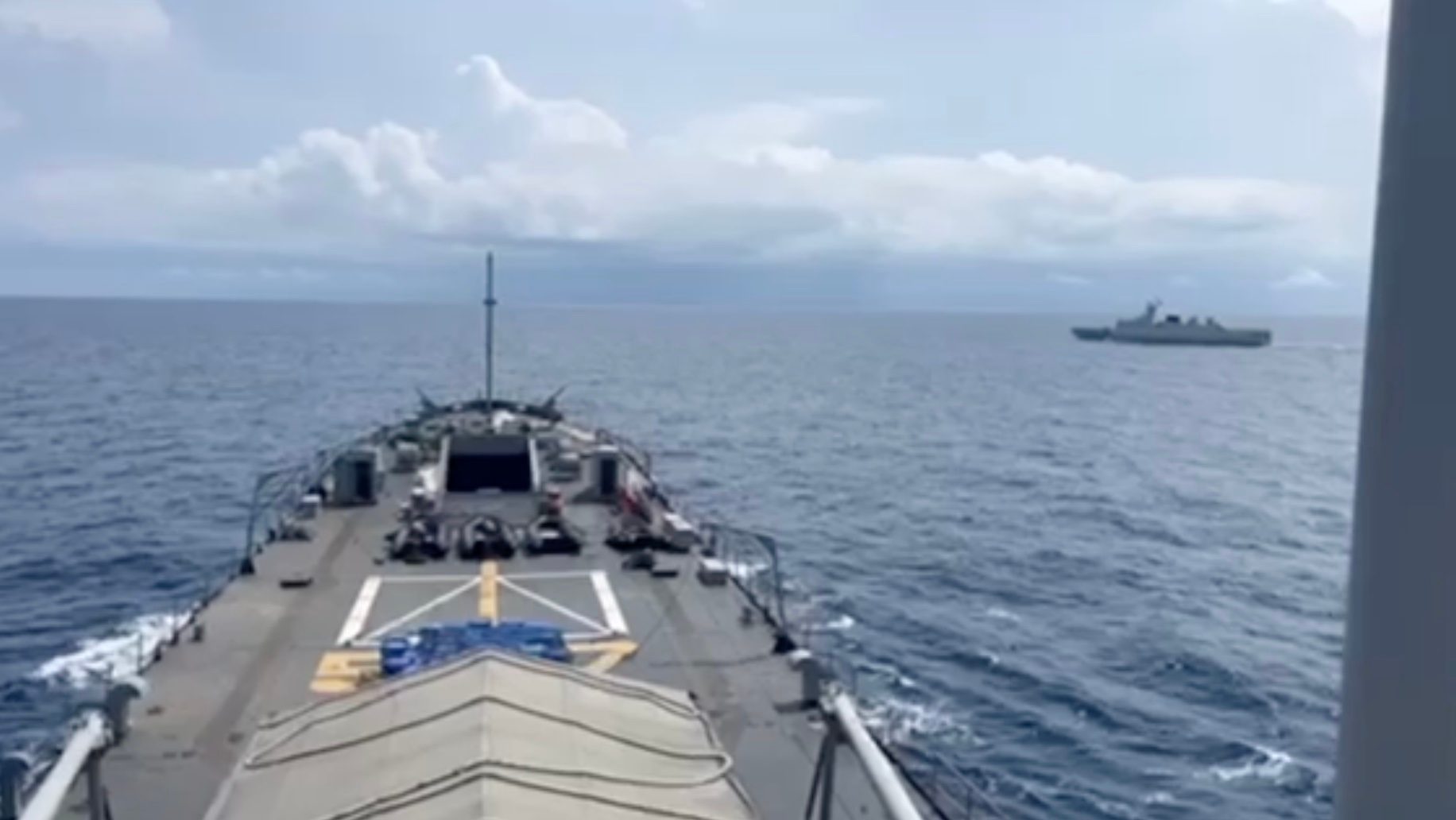SUMMARY
This is AI generated summarization, which may have errors. For context, always refer to the full article.

MANILA, Philippines – Beijing’s “longest unbroken streak” of rising military spending is the “main driver” for its neighbors doing the same, according to a yearly study of trends in the world’s military expenditures.
“Aside from being the biggest spender in Asia and Oceania, China is the main driver of spending trends elsewhere in the region since many of its neighbors perceive China’s growing military power as a reason to enhance their own military capabilities,” according to the Stockholm International Peace Research Institute (SIPRI)’s 2023 edition of its Trends in World Military Expenditure report, released in late April 2024.
Beijing, based on the report, budgeted over $296 billion for its military in 2023, a 6% increase from its spending the year prior. The figure represents 12% of the world’s military expenditures and over 50% of the Asia and Oceania region.
SIPRI noted that while China holds a nearly three-decade stream in the rise of military spending, the rate of its spending growth has slowed over the past decade.
“China recorded an increase of 60% in 2014–23 compared with increases of just under 150% in 2004–13 and 1994–2003. This also reflects the slower rate of Chinese economic growth during the past decade,” the report said.
The figures are estimates of SIPRI, as China’s publicly declared military budget is much lower. An American legislator has also said China’s actual military spending could be much higher than current estimates.
Top spenders
While China ranks second in the rankings, its fellow superpower, the United States, is the undisputed top spender, with over $916 billion allocated for the military in 2023. To put things in perspective, this means the US spends 3.1 times more than China, according to the report.
The bulk of the US’s expenses, said SIPRI, was spent on “research, development, test and evaluation.”
“This aligns with its decision to shift its focus away from counter-insurgency operations and asymmetric warfare to developing new weapon systems that could be used in a potential conflict with adversaries with advanced military capabilities,” said the report.
US spending includes military aid to allies, including Ukraine. The 2024 report covering the year 2023 was released just days before the US approved a $95-billion military aid package that includes funding for Ukraine, Israel, and to a much lesser extent, Taiwan. The bulk of the spending is for Ukraine, which has been fighting a Russian invasion for over two years already.
Ukraine, according to the report, recorded the biggest percentage increase in spending – up 51% in 2023. Last year, Ukraine was the 8th largest military spender in the world.
What about the Indo-Pacific?
Asia and Oceania, like the rest of the world, also saw an increase in military spending, based on SIPRI data. Spending in 2023 hit $595 billion, a 4.4% increase from the year prior and a 46% increase from just a decade ago.
“The regional increase was primarily driven by China and its neighbors: military spending rose in all countries in East Asia as well as in India,” said SIPRI.
Japan saw an 11% surge in its spending compared to 2022 at $50.2 billion, the largest year-on-year increase since 1972, SIPRI pointed out.
“The budget for 2023 also marked the first year of Japan’s biggest military build-up program since the end of World War II. Under the program, Japan aims to bolster its counterstrike capabilities by investing heavily in aircraft, ships and long-range missiles,” the report said.
Japan will be spending much more in the coming years, based on a five-year spending plan that would turn it into the world’s third-largest military spender.
Tokyo also recently introduced Official Security Assistance, a program that allows the government to provide national security help to countries that align with its own security strategies. The Philippines is the first recipient of that scheme.
Taiwan, a possible flashpoint for tensions in the region, saw military spending increase by 11% in 2023. “Based on a perceived growing threat from China, Taiwan created an extra-budgetary fund in 2020 and another in 2022 earmarked for procuring F-16 combat aircraft and naval systems. Together, these funds accounted for 21 percent of Taiwan’s total military spending in 2023,” said the report.
India has also seen an increase in military spending, ranking fourth globally. “This aligns with the government’s priority to strengthen the operational readiness of the armed forces amid ongoing tensions with China and Pakistan,” said SIPRI.
Philippines’ Horizon 3
Manila, unsurprisingly, is far from the world’s top military spenders. In the 2024 budget, the defense sector gets over P278 billion out of a P5.768 trillion total budget. Of that amount, P40 billion will be spent for modernization.
SPRI data indicates that military expenditure in the Philippines has amounted to between 1 to up to 1.4% of its gross domestic product in recent years.
The Philippines is projected to spend over P2 trillion in the next decade for Horizon 3, or the military modernization program.
The third phase of the modernization program was reimagined – at one point dubbed “re-Horizon 3” after the Philippines, under the Marcos administration, officially shifted focus to external defense.
Under President Ferdinand Marcos Jr. too, the Philippines has become more firm in asserting its sovereign rights and claims in the West Philippine Sea, or parts of the South China Sea that include the Philippines’ exclusive economic zone.
China claims almost all of the South China Sea, ignoring a 2016 Arbitral Award that sided with the Philippines. Chinese vessels, including its navy and coast guard, constantly patrol the South China Sea, including features within the Philippines’ exclusive economic zone.
In Ayungin Shoal and Bajo de Masinloc, flashpoints for Philippine-Chinese tensions in the West Philippine Sea, the China Coast Guard, which is under its Central Military Commission, used water cannons against Philippine vessels. – Rappler.com
Add a comment
How does this make you feel?







![[Rappler’s Best] Gaming a war](https://www.rappler.com/tachyon/2024/05/gaming-a-war.jpg?resize=257%2C257&crop=353px%2C0px%2C720px%2C720px)





There are no comments yet. Add your comment to start the conversation.